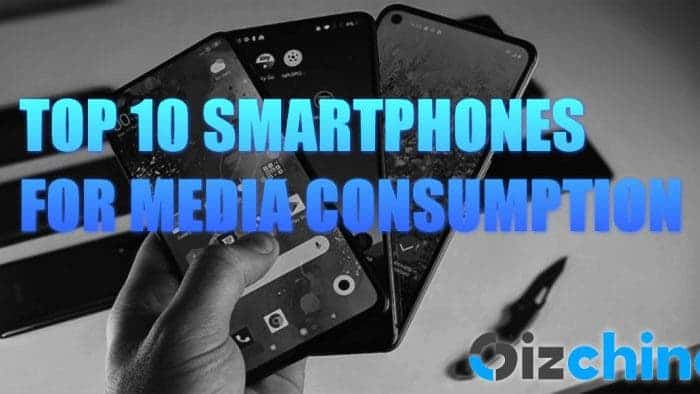With the end of July around the corner, we are here to bring a new edition of our “Top 10 smartphones for Media Consumption” listing. The second quarter of 2021 started with a lot of new launches and it will only get better. We all know there will be many new smartphones coming to agitate the market. However, what stands right nows as the best offerings for media consumers? For some users, media consumption is basically one of the reasons for pushing forward the smartphone market. Especially in these days when the pandemic is yet a reality. People need to prioritize isolation over public meetings and some cases need to stay at home more often. Sometimes we just need to find ways to kill boredom.
In recent times, we’ve been passing countless hours watching movies through online video streaming or gaming services, we’ve been navigating through social media feeds or we’re playing games with our handsets to kill boredom. If you need a good smartphone for media consumption’s sake, then you will need to look at some important factors – Display, Battery Capacity, and certain aspects of the hardware. We hope that on this list, you will get the necessary help to get a good smartphone. Hopefully, any of these devices will meet your needs in this particular department. We’ve elaborated a list of the top 10 smartphones for media consumption you can get in July 2021.
TOP 10 SMARTPHONES FOR MEDIA CONSUMPTION – DISCLAIMER
The devices in the list are, in our opinion, the best devices for watching Netflix and other streaming platforms such as YouTube, Twitch, etc. Moreover, they also deliver great performance and are ideal for trending apps such as TikTok, Instagram, and even Clubhouse. They can also play demanding games without much stress. So if you’re needing a device that will meet all your “multimedia needs” check out our list with good recommendations. Take in mind that these are just the best 10 devices in our opinion. For the next month, there will be more options, and a new list with our best ten picks.
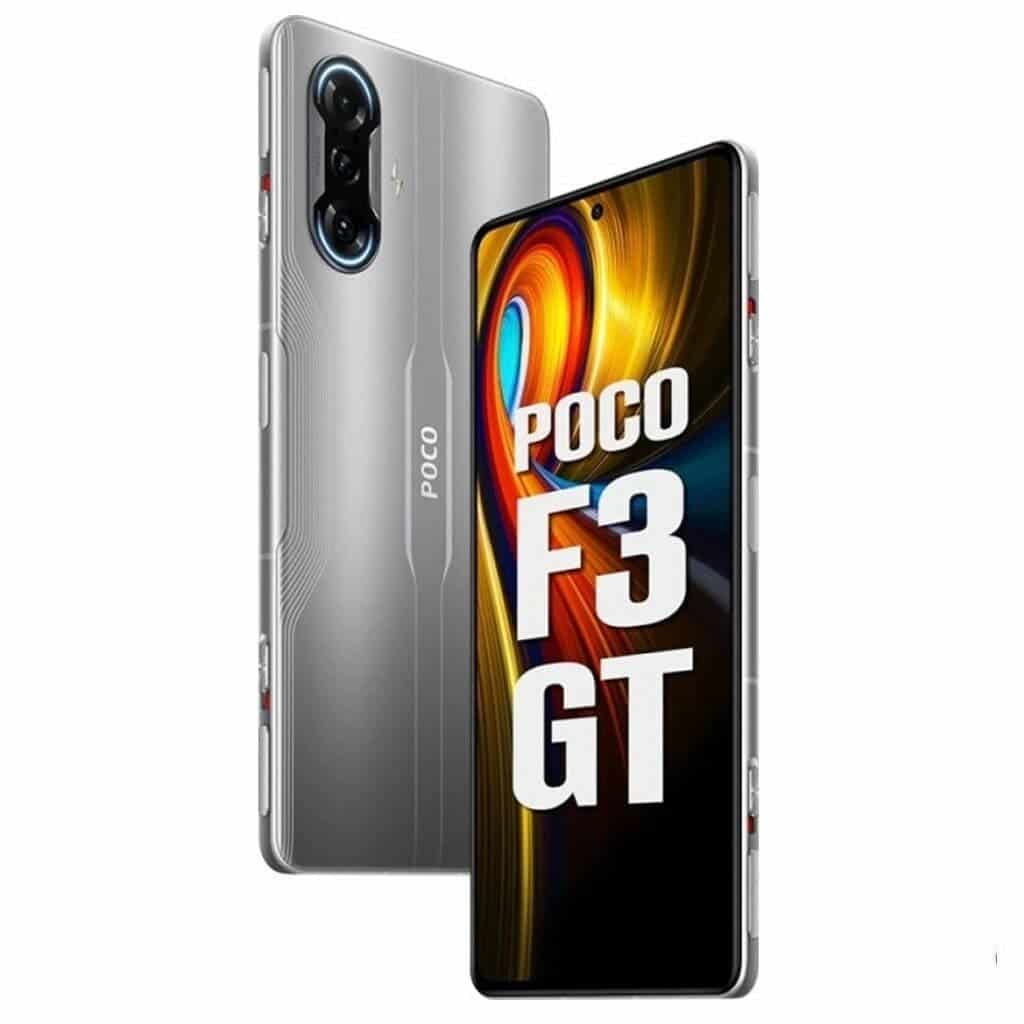
POCO F3 GT
We start our list with the POCO F3 GT. Interestingly, the device made its presence in the last list as Redmi K40 Gaming Edition. The device was released in China as the long-promised gaming smartphone under the Redmi series. Now, however, it has received a new rebranding for global customers alongside the POCO X3 GT. The device carries a POCO F3 GT moniker and brings all the gaming appeal of the K40 Gaming Enhanced Edition. However, it arrives as a cost-effective flagship rather than just a gaming device.
The POCO F3 GT offers a certain appeal as a gaming smartphone. Hence, it packs a whole set of features for extensive gaming sessions. You’ll be able to enjoy the best games in the market with high-quality settings and a stable frame rate. Moreover, the high refresh rate of this display will make the whole experience amazing to the eyes. To the top-notch specs, most gaming smartphones are also excellent products for watching media. The POCO F3 GT flaunts a 6.67-inch display. It’s an AMOLED screen with a 120 Hz refresh rate, 500 nits of brightness, 1B colors, HDR10+ support. The device has a Full HD+ resolution with 2,400 x 1,080 pixels, a 20:9 aspect ratio, and a 339 ppi density. On top of the display, we also have Corning Gorilla Glass 5.
Under the hood, the POCO F3 GT packs a MediaTek Dimensity 1200 SoC (6nm) which also brings Cortex-A78 cores but has a single one clocked at up to 3 GHz. The device also packs a Mali-G77 MC9 GPU which offers the best possible gaming performance on mobile games. The device comes alongside 6 GB, 8GB, and even 12 GB of RAM. In terms of storage, the device has 128 GB or 256 GB of Internal Storage. Unfortunately, there is no micro SD card slot so you’ll have to deal with the available storage. In the future, this device will receive the Extended RAM feature which will add extra virtual RAM based on your storage.
The device packs a triple-camera setup with a primary 64 MP camera with an f/1.7 aperture, PDAF, and 0.7um pixel size. The camera also brings an 8 MP ultrawide snapper with an f/2.2 aperture. Finally, we have a 2 MP macro camera with an f/2.4 aperture. On the front, the device has a 16 MP selfie that sits inside of a centered punch-hole. The device has stereo speakers but unfortunately lacks a 3.5mm headphone jack. The audio is tuned by JBL.
Other notable features include Wi-Fi 6 support, dual-band, with Wi-Fi Direct. The device also has Bluetooth 5.2, GPS, A-GPS, GLONASS, BDS, GALILEO, and other navigation systems. The smartphone has a 5,065mAh battery with 67W fast charging. It supports Power Delivery 3.0 and Quick Charge 3+. The handset runs Android 11-based MIUI 12.5 straight out of the box.
The POCO F3 GT is a powerhouse for certain users and therefore deserves a place in the top 10 smartphones for media consumption gang.
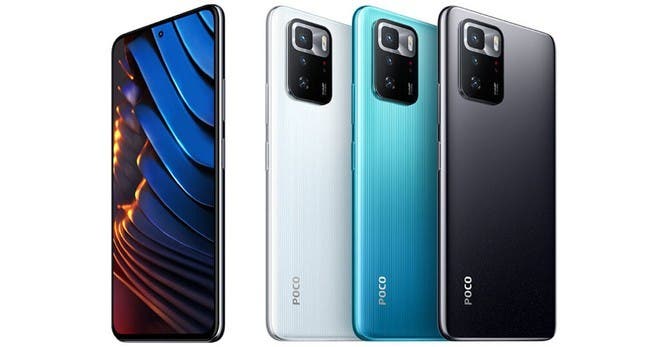
POCO X3 GT
The next device in our list is the POCO X3 GT. The handset was released only in China as Redmi Note 10 Pro 5G. However, it was recently released in Malaysia as a POCO X3 GT. The device brings 5G connectivity and other impressive specifications such as 67W fast charging. For now, it’s unclear if it will reach more markets like India, but it does deserve a place in this list due to all its appealing specifications.
The POCO X3 GT flaunts a 6.6-inch IPS LCD with a Full HD+ display with 2,400 x 1,080 pixels resolution, 20:9 aspect ratio, and Corning Gorilla Glass Victus for extra protection for the selfie camera. Note the Gorilla Glass Victus here, which is something often associated with the premium flagship. The handset also offers HDR10 and a 120Hz refresh rate. It also has 450 nits of typical brightness.
Under the hood, the smartphone brings the excellent MediaTek Dimensity 1100 SoC which brings Cortex-A78 cores and a powerful Mali-G77 MC9 GPU. Apart from the obvious 5G connectivity that this smartphone brings, it is a powerhouse. You can easily play games with this smartphone without any hassle. Even the most demanding ones with high graphics. The handset is available in variants with 6 GB and 8 GB of Internal Storage. In terms of storage, we have 128 GB or 256 GB UFS 3.1 storage. The Dimensity 1100 is very close to the Dimensity 1200 in terms of performance, it only gets a lesser GPU and does not have the 3.0 GHz Cortex-A78 core. Still, it’s one of the best chips in the market.
The POCO X3 GT comes with a triple-camera setup comprised of a 64MP primary camera with f/1.8 aperture, PDAF. Ther is also an 8MP ultrawide module with an f/2.2 aperture. Finally, the third camera is a 2 MP macro module with an f/2.4 aperture. The camera has HDR and gets aided by a Dual-LED Dual-tone flash. The device brings a center-aligned punch-hole selfie camera with a 16 MP and an f/2.5 aperture.
Other notable features are NFC, Stereo Speakers, Wi-Fi 6, and Bluetooth 5.2. The Redmi Note 10 Pro aka POCO X3 GT features a huge 5,000mAh battery with 67W fast-charging support. The device will hit global markets pretty soon as POCO X3 GT and will certainly fit as one of the most interesting devices for media consumption. For that reason, it gets a place in the Top 10 smartphones for media consumption.
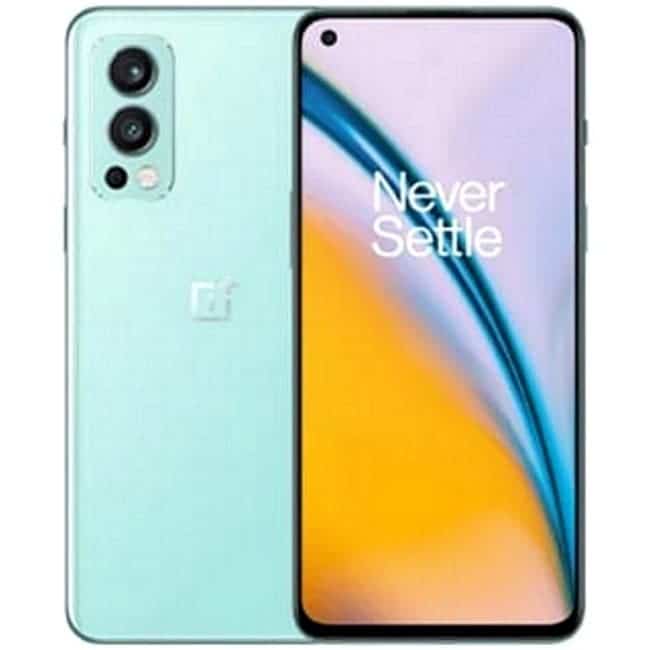
OnePlus Nord 2
The next device in the list of Top 10 smartphones for media consumption is the OnePlus Nord 2 5G. After months of waiting, the company finally unveiled the “king of OnePlus Nord series”. The OnePlus Nord 2 arrives as a bold step beyond its predecessor. The device has a flagship-grade chipset, powerful cameras, and good technologies to complement this package as one of the best offerings in the market.
The OnePlus Nord 2 5G offers top-notch media consumption quality thanks to a Fluid AMOLED display with HDR 10+ support and a 90 Hz of refresh rate. The display does not bring changes over the last year’s model since it still has a 6.43-inch diagonal with an 85.8% screen-to-body ratio. It’s a Full HD+ display with 2,400 x 1,080 pixels of resolution and 409 ppi density. The display is covered with Corning Gorilla Glass 5. The back also brings Gorilla Glass 5, but the frame is made of plastic. Apparently, this is a measure to cut some costs.
Under the hood, the device has the MediaTek Dimensity 1200-AI SoC. This still is the 6 nm-based MediaTek processor that features one ARM Cortex-A78 core clocked at up to 3.0 GHz, plus three ARM Cortex-A76 cores at 2.6 GHz and four ARM Cortex-A55 cores at up to 2.0 GHz. However, the AI on its name means that it’s different from the original processor.
OnePlus has made some tweaks to ensure a better performance and image quality with this smartphone. So the OnePlus Nord 2 may deliver a more customized experience over other devices with the same chipset. In terms of graphics, it still has the Mali-G77 MC9 GPU. The OnePlus Nord 2 comes with 8 GB of RAM and 128 GB of Internal Storage. Moreover, the device has 12 GB of RAM And 256 GB of Internal Storage. As usual, the Nord 2 does not include a microSD card slot as this seems to be exclusive for the cheaper OnePlus smartphones.
In terms of optics, users will have a good experience while using Instagram, TikTok, or recording live streams with the device. The OnePlus Nord 2 packs a 50 MP primary camera with f/1.9 aperture, 24mm, 1/1.56, 1.0um pixel size, PDA, and Optical Image Stabilization. The secondary camera is an 8 MP ultrawide module with an f/2.3 aperture and 119-degree field of view. The third and final sensor is a 2 MP monochrome camera with an f/2.4 aperture. The device also packs a 32 MP selfie snapper with f/2.5 aperture and Auto HDR. This selfie camera can record videos at 1080 resolution and 30 frames per second.
Other features in the OnePlus Nord 2 include Stereo Speakers, but the device lacks a 3.5 mm headphone jack. It also comes with Wi-Fi 802.11 a/b/g/n/ac, Bluetooth 5.2 with A2DP, LE, aptX HD. The device also has GPS with A-GPS, GLONASS, GALILEO, BDS, SBAS, and NavIC. Moreover, it boasts NFC support and has a USB Type-C port. The device has a 4,500 mAh battery with 65 W fast charging. It runs OxygenOS 11.3 based on Android 11.
In certain markets, the OnePlus Nord 2 is a cheap alternative for those who need OIS and 5G. The Dimensity 1200 also delivers stellar performance for games. The battery with fast charging completes the package.
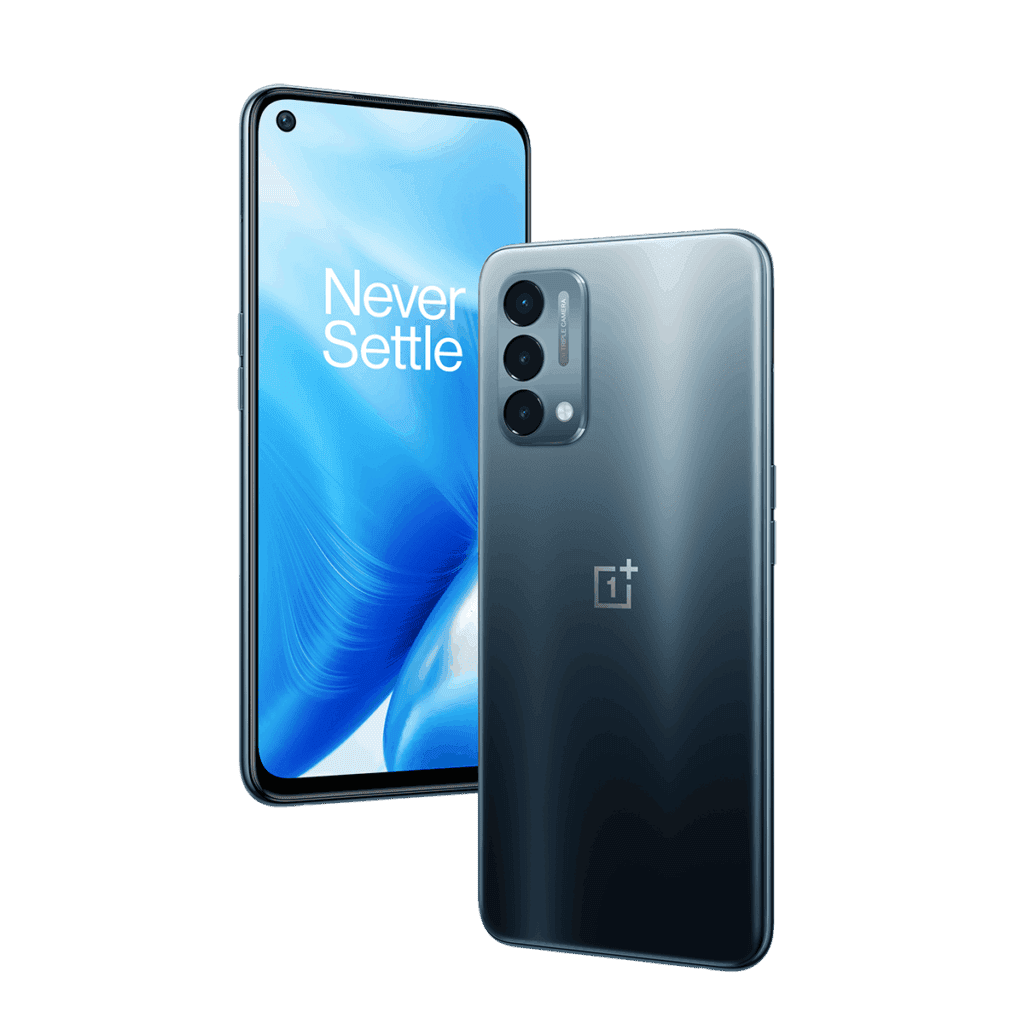
OnePlus Nord N200
The next device in our Top 10 smartphones for media consumption list is a device placed in the budget segment. Before the OnePlus Nord 2, the company unveiled the OnePlus Nord N200 as a sequel for its cheapest smartphone series. While the OnePlus Nord N100 was a major disappointment for everyone that was used to OnePlus smartphones, the OnePlus Nord N200 tries to address certain aspects and offer a better overall experience.
The OnePlus Nord N200 packs a 6.49-inch LTPS IPS LCD screen with a 90 Hz refresh rate, Full HD+ resolution with 2,400 x 1,080 pixels, and 405 ppi density. Unfortunately, the display is not certified for HDR content, but due to its low pricing point, we can’t argue much about that. The device has a punch-hole cutout for the selfie snapper, but there’s no mention of Gorilla glass here.
Under the hood, we have the Qualcomm Snapdragon 480 5G processor. This is an entry-level 5G chip offered by Qualcomm. It’s an Octa-Core chipset that is beyond the Snapdragon 450 and 460 in terms of performance. The GPU is also much better – Adreno 619 – than what was previously seen in Qualcomm’s entry-level range. The SoC is built on an 8 nm node which delivers efficiency. The device is paired with 4 GB of RAM and 64 GB of Internal Storage and packs a micro SD card for further memory expansion. Let’s see if OnePlus will release an extended RAM feature in the future for extra RAM.
In terms of optics, the OnePlus Nord N200 packs a 13 MP primary camera in the rear with f/2.2 aperture, PDAF. There is also a 2 MP macro camera with an f/2.4 aperture, and a 2 MP f/2.4 depth sensor. This is a modest camera setup, but it may be enough when you can’t pay much and needs endurance and 5G connectivity. For selfies and video calls, the device has a 16 MP camera with f/2.1 aperture and HDR.
The device has a 3.5 mm headphone jack and a single loudspeaker. The device boasts Wi-Fi 5, Bluetooth 5.1 with A2DP and LE. It also comes with all sort of GPS technologies, NFC, FM Radio and a USB Type-C port. The OnePlus Nord N200 draws powers from a huge 5,000 mAh battery with 18W fast-charging. The device runs OxygenOS 11 with Android 11 straight out of the box. The device has a side-mounted fingerprint scanner if you’re wondering and also supports Face Unlocking.
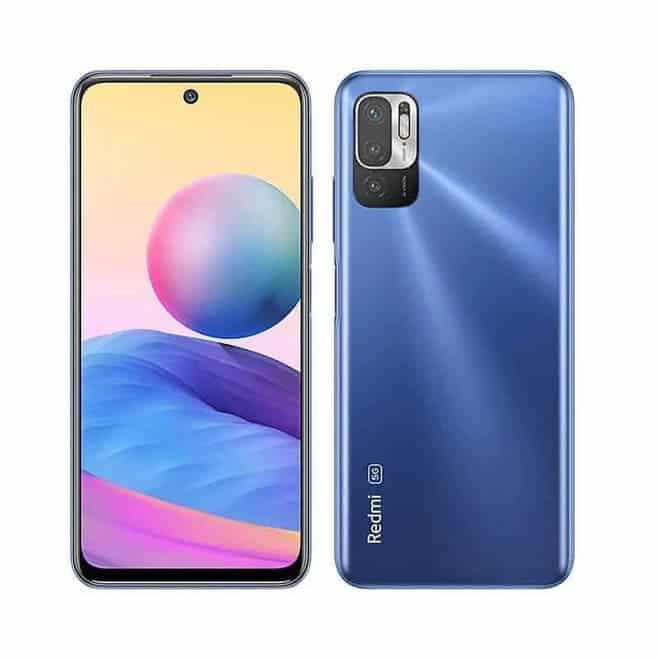
Redmi Note 10T / Redmi Note 10 5G
As recommended by one of our readers, the Redmi Note 10 5G is another option that deserves a place in the top 10 smartphones for media consumption list. Interestingly, this device is now available in India and Russia as Redmi Note 10T. As a brand new device for these markets we can explain why it is a very good offering for users who want to enjoy media content, moderate gaming and speedy 5G connectivity.
The Redmi Note 10T packs a large 6.5-inch IPS LCD screen with 90 Hz refresh rate, Full HD resolution with 2,400 x 1,080 pixels and Corning Gorilla Glass 3. This device has 400 nits typical brightness and 500 nits of peak brightness. The device also gets a Gorilla Glass 3 on its black while the frame is made of plastic.
The Redmi Note 10T packs the MediaTek Dimensity 700 5G with 7 nm architecture. The processor features two ARM Cortex-A76 cores clocked at up to 2.2 GHz and six power efficient ARM Cortex-A55 ores clocked at up to 2.0 GHz. The device also has a Mali-G57 MC2 GPU. This processor is modest, but can still run graphic demanding games at medium settings. The device runs Android 11 with MIUI 12 running on top. The Note 10T variant is available in options with 6 GB of RAM with 64 GB Storage or 6 GB of RAM with 128 GB of Internal Storage. Of course, you can expand this amount via a micro SD card slot. However, it’s a hybrid slot so you’ll need to sacrifice dual SIM for extra memory.
In terms of optics, the Redmi Note 10T comes with a 48 MP primary camera with f/1.8 aperture, 0.8um pixel size and PDAF. There are two other modules – a 2 MP with f/2.4 aperture and a 2 MP depth sensor with f/2.4 aperture. For selfies and video calls, the device sports an 8 MP snapper with f/2.0 aperture with HDR.
The device comes with Stereo Speakers and 3.5 mm headphone jack. The device packs Wi-Fi 5, Bluetooth 5.1, A2DP with LE. It also runs GPS with A-GPS, GLONASS and BDS. The device lacks NFC, but packs a IR Blaster, FM Radio and USB Type-C port. The Note 10T runs with a huge 5,000 mAh battery which means an entire day of usage without any issue. Moreover, it can charge with 18 W fast-charging.
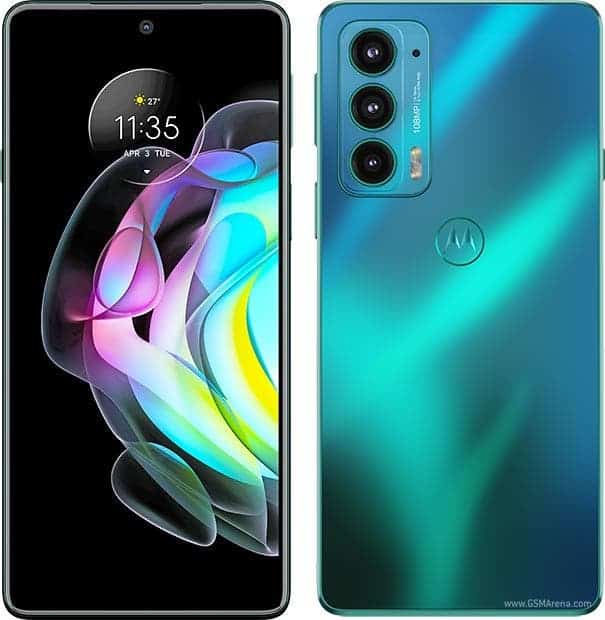
Motorola Edge 20
Motorola launched yesterday its 2021 flagship series and the devices have compeling specifications. If you’re a die-hard fan of Motorola, then the Edge 20 and Edge 20 Pro stand as great options for media consumption due to their panels and batteries as well as the good processors giving power to them.
The Motorola Edge 20 flaunts a 6.7-inch display with 89 screen-to-body ratio. It’s an OLED screen with Full HD+ resolution of 2,400 x 1,080 pixels and 385 ppi density. The display has HDR 10+ certification and one of its biggest highlights is a 144 Hz refresh rate. So far, only gaming smartphone brands are shipping devices with such high-refresh rate. So it’s amazing to see Motorola bringing this to a device that sits in the convetional flagship segment. Unforutnately, it comes with the old Gorilla Glass 3 coating.
Under the hood, the Motorola Edge 20 packs the Qualcomm Snapdragon 778G with 6 nm standard. This is the first Qualcomm chipset with 6nm standard and comes to compete in the upper mid-range segment. This processor comes with the excellent Adreno 642L GPU which can deliver stellar performance in games. The device runs with 8 GB of RAM and is available in variants with 128 GB or 256 GB of Internal Storage.
In terms of optics, the Motorola Edge 20 sports a 108 MP camera with f/1.9 aperture and PDAF. There is a secondary telephoto camera with 8 MP resolution and 3x optical zoom as well as OIS. The third and final sensor is a 16 MP ultrawide camera with f/2.2 aperture and 1.0um pixel size. For selfies and video calls, the device sports a 32 MP selfie snapper with HDR and 1080p video recording.
The Motorola Edge 20 also sports a 3.5 mm headphone jack but lacks Stereo experience on its loudspeaker. The device has Wi-Fi 5, Bluetooth 5.2 with A2DP and LE. GPS comes with A-GPS, GLONASS, BDS and GALILEO. The devie comes with NFC, lacks FM Radio and comes with USB Type-C port. The device has an under display fingerprint scanner and runs Android 11 straight out of the box. Unfortunately, Motorola says that it will receive only one major Android upgrade for Android 12. The device draws power from a 4,000 mAh battery with 30 W Fast-charging.
The Motorola Edge 20 gives the opportunity to experience the Snapdragon 778G and also has one of the best displays of its cattegory. Last but not least, the camera setup is quite powerful with the telephot ocamera. For that reason, it deserves a place in the top 10 smartphones for media consumption.
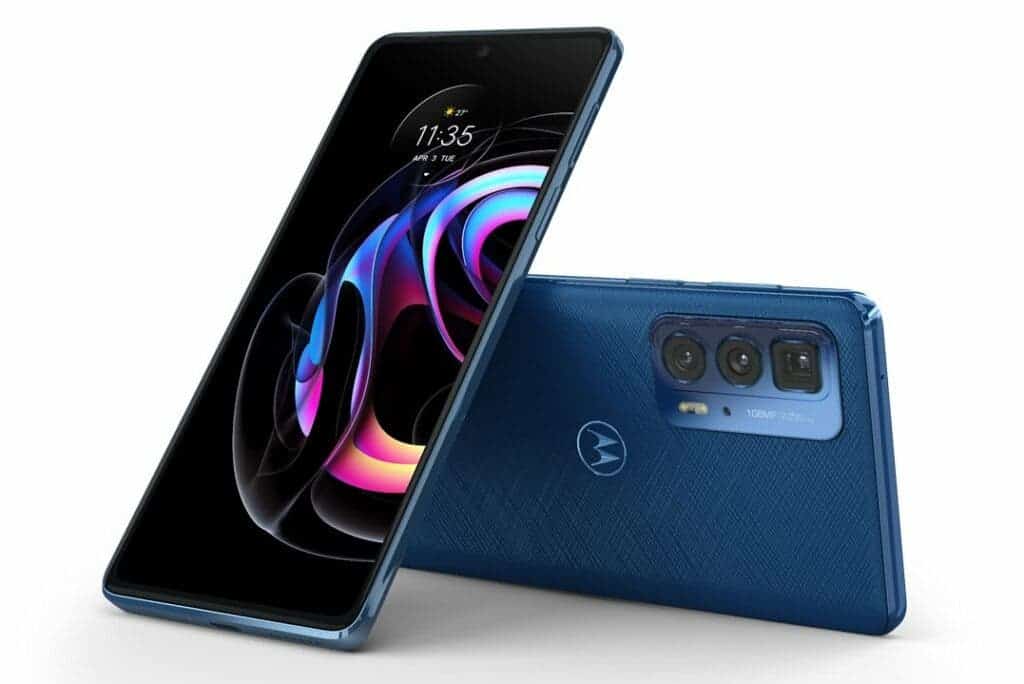
Motorola Edge 20 Pro
The Motorola Edge 20 Pro is the true flagship of the series and bring most advancements that can make it a better option for certain users. The Motorola Edge 20 Pro comes with the very same 6.7-inch panel with Full HD+ resolution, HDR 10+ and 144 Hz refresh rate. However, it gets the stronger Corning Gorilla Glass 5 coating on both sides. Just like its sibling, this device has a center-aligned punch-hole for the selfie snapper.
Under the hood, the smartphone packs the Qualcomm Snapdragon 870 SoC with 7 nm architecture. That may be a disappointment for those who have been waiting for a Qualcomm Snapdragon 888 SoC. Unfortunately, this has been a common strategy for Motorola it is always one step below its competitors, at least the display pushes it forward. The device comes with up to 12 GB of RAM and 256 GB of Internal Storage.
In terms of optics, we get more advanced cameras. The device has a primary 108 MP camera with PDAF, an 8 MP periscope telephot olens with 5x optical zoom, PDAF and OIS. The third and final sensor is a 16 MP ultrawide snapper with f/2.2 aperture. The devie has a 32 MP selfie snapper with f/2.3 aperture and 0.7 pixel size.
The device drops the 3.5 mm headphone jack, but brings Wi-Fi 6 connectivity. It also packs Bluetooth 5.1 with A2DP and LE. The device has GPS with A-GPS, GLONASS, BDS, GALILEO. It also has NFC, FM Radio and comes with USB Type-C 3.1 port. The device gets a bigger 4,500 mAh battery with the very same 30 W fast-charging support.
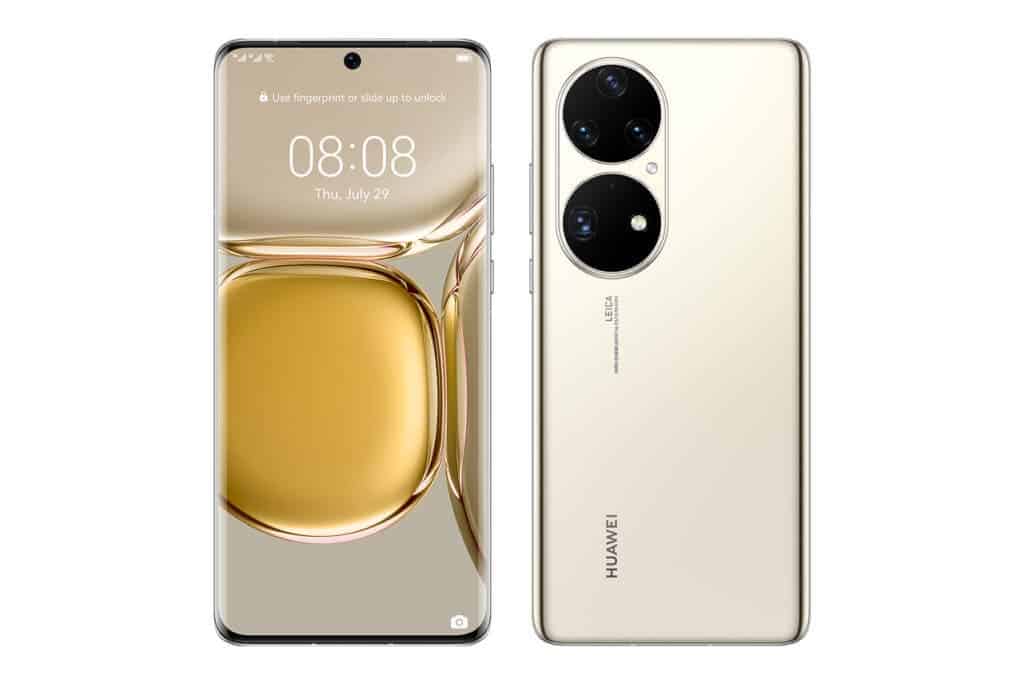
Huawei P50 Pro
Huawei launched its Huawei P50 series last year after many months of delay. This time around, these devices are more interesting since they will be available worldwide and for the first time in years have a Qualcomm Snapdragon flagship SoC.
The Huawei P50 Pro leads the way wit ha 6.6-inch OLED display with an unusual 2,700 x 1,228 pixels resolution. It has a 120 Hz refresh rate and an impressive 91.2 % screen-to-body ratio. The display has a small center-aligned punch-hole for the selfie camera.
Under the hood there are two possible configurations – Kirin 9000 and Qualcomm Snapdragon 888 SoC. However, they only have 4G connectivity. We assume this has something to do with their future worldwide availability. The Kirin 900 gets a Mali-G78 GPU with 24 cores whereas the SD888-powered variant packs the excellent Adreno 660 GPU. The device runs with up to 12 GB of RAM and up to 512 GB of Internal Storage.
In terms of optics, the device has a 50 MP wide camera with omnidirectional PDAF, Laser AF, OIS. The devie has 64 MP with f/3.5 aperture, persicope telephoto, PDAF and OIS. There is a third 13 MP ultrawide module and a 40 MP B/W module. These are Leica-branded cameras and we have to say that it’s a unique design.
The Huawei P50 Pro offers Stereo Speakers but lacks a 3.5 mm headphone jack. The device offers Wi-Fi 6, Bluetooth 5.2, GPS with all sort of standards, NFC and an Infrared port. The device has a USB Type-C 3.1 with 66W fast-charging. Moreover, it runs with a 4,360 mAh battery with fast-wireless charging with 50W.
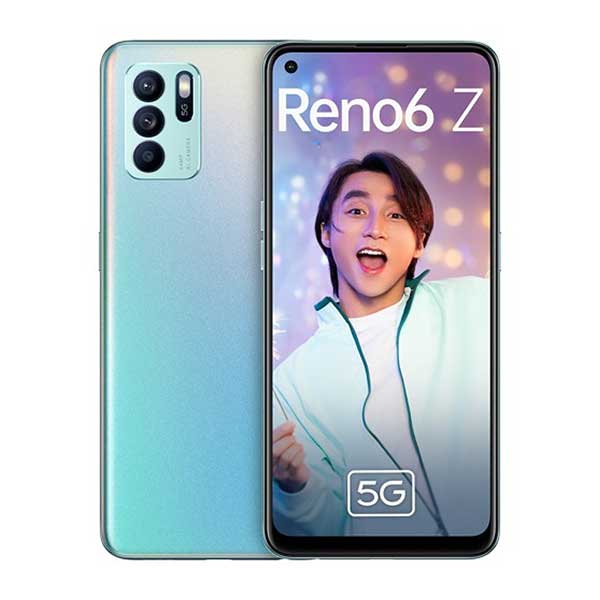
Oppo Reno6 Z
The Oppo Reno6 Z has joined the top 10 smartphone for media consumption due to its good value and specifications. It’s a nice option for those who can’t pay much and want a great experience for media consumption. The device flaunts a 6.4-inch AMOLED display with whopping 800 nits peak brightness and Full HD+ Resolution.
Under the hood, the smartphone packs a MediaTek Dimensity 800U 5G processor. It carries two 2.4 GHz Cortex-A76 cores and six 2.0 GHz Cortex-A55 cores with a Mali-G57 MC3 GPU. The device has up to 8 GB of RAM and up to 256 GB of Internal Storage. Interestingly, this is one of the few Oppo smartphones that offer support for microSD card.
The device comes with a triple-camera setup with a 64 MP f/1.7 aperture and PDAF. Further, it also has an 8 MP f/2.2 aperture for ultrawide shots and a 2 MP f/2.4 macro camera. The device also gets a 32 MP camera with f/2.4 aperture for selfies and video calls.
In terms of connectivity, the Oppo Reno6 Z comes with Wi-Fi 5, Bluetooth 5.1 with A2DP, LE, aptX HD. The device also has complete PGS, NFC and USB Type-C 2.0. The device runs with Android 11 straight out of the box with ColorOS 11 on top. It draws power from a 4,310 mAh battery with fast-charging at up to 30W.
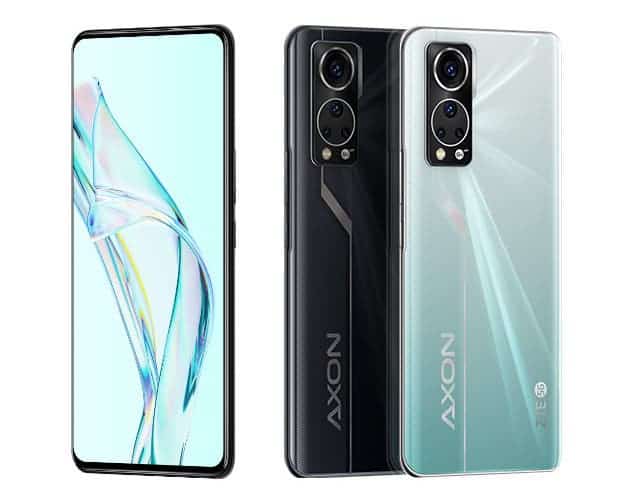
ZTE Axon 30
After several months of waiting, ZTE has finally unveiled the second generation of its in-display camera in the form of the ZTE Axon 30. The devie brings awesome specifications and we believe that it’s a perfect entry for this family. After all, in addition to the excelent specifications, we have a gorgeous full-screen display without interruptions. You can watch your movies, shows and play games without having to look at punch-holes, notches or anything else. For that reason, it joins the top 10 smartphones for media consumption list.
The Axon 30 comes with a 6.92-inch OLED screen with 120 Hz refresh rate and 85.9 screen-to-body ratio. The device offers 2,460 x 1,080 pixels of resolution. Moreover, this time around, the screen is so good that it’s almost impossible to notice the selfie snapper. The ZTE Axon 30 brings a massive upgrade in terms of performance over its predecessor due to the choice of a Qualcomm Snapdragon 870 SoC. The device is paired with up to 12 GB of RAM and up to 256 GB of Internal Storage. It runs Android 11 with MyOS running on top. MyOS is also a ROM that comes with virtual RAM feture. The ZTE is also a flagship that support microSD.
In terms of optics the Axon 30 comes with a 64 MP f/1.8 camera with PDAF, an 8 MP ultrawide snapper with f/2.2 aperture, a 5 MP macro camera with f/2.4 and a 2 MP f/2.4 depth sensor. The ZTE Axon 30 selfie camera offers 16 MP camera with HDR resolution and f/2.0 aperture. The device also has a 3.5 mm headphone jack.
The device offers Wi-Fi 6, Bluetooth 5.1 with A2DP and LE. It also comes with A-GPS, GLONASS, GALILEO and BDS. It also has NFC and draws power from a 4,200 mAh battery with 55 W fast-charging.

